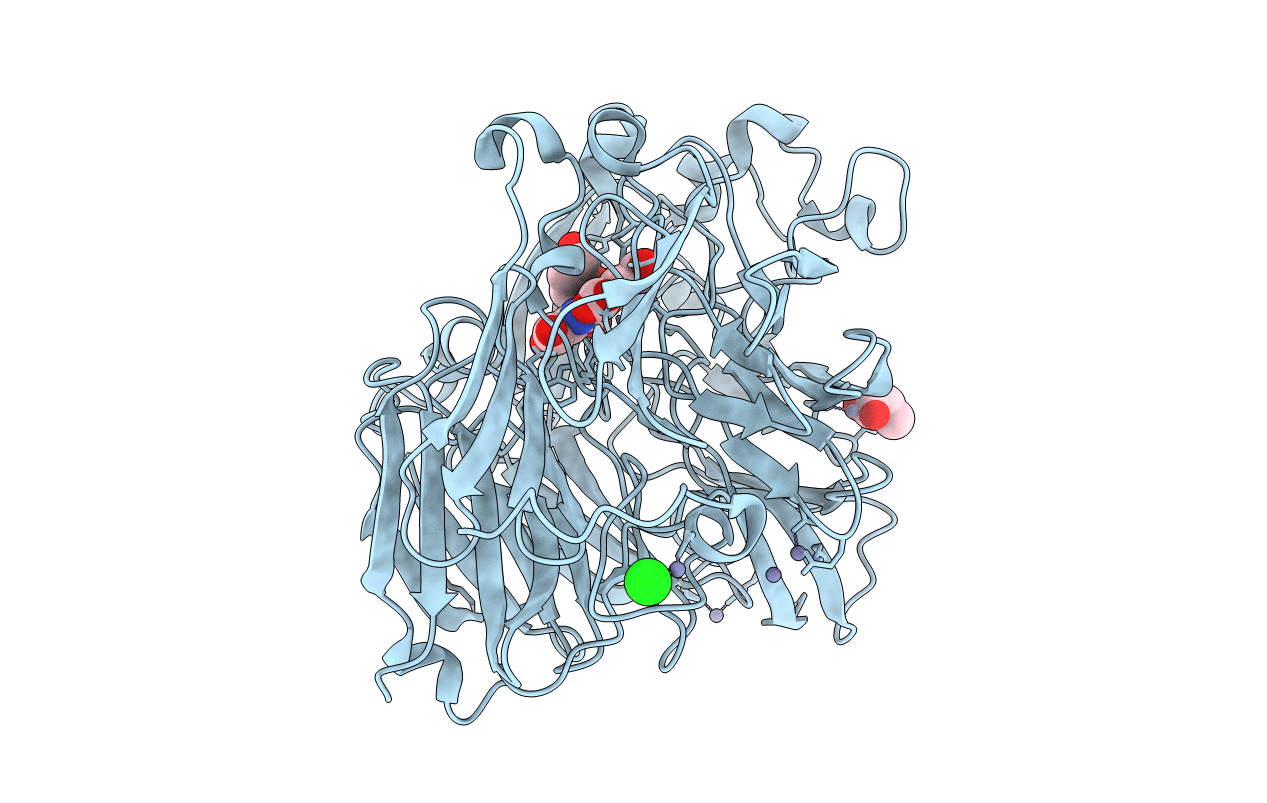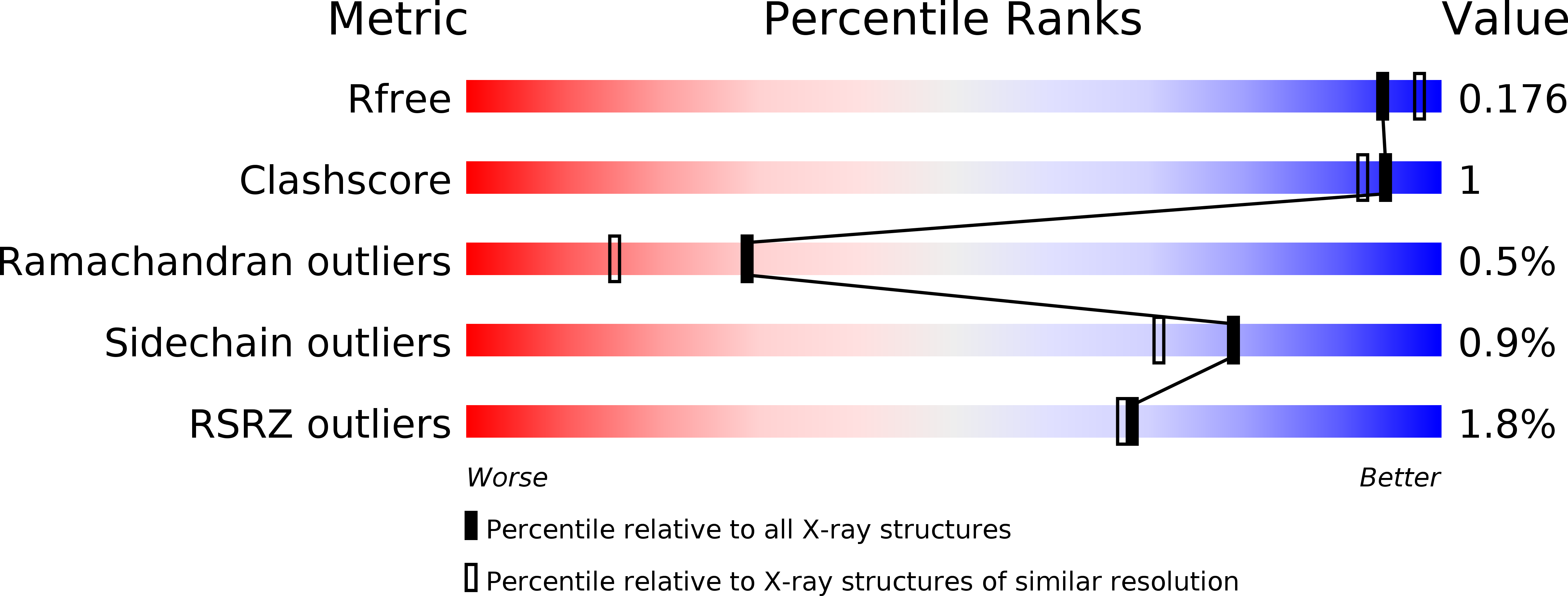
Deposition Date
2014-03-25
Release Date
2015-03-25
Last Version Date
2024-11-06
Entry Detail
PDB ID:
4CVC
Keywords:
Title:
Crystal structure of quinone-dependent alcohol dehydrogenase from Pseudogluconobacter saccharoketogenenes with zinc in the active site
Biological Source:
Source Organism:
PSEUDOGLUCONOBACTER SACCHAROKETOGENES (Taxon ID: 133921)
Host Organism:
Method Details:
Experimental Method:
Resolution:
1.83 Å
R-Value Free:
0.18
R-Value Work:
0.16
R-Value Observed:
0.16
Space Group:
C 1 2 1


